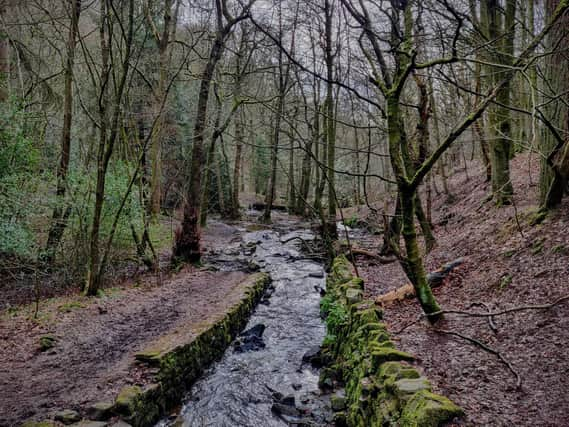New flood scheme to help protect valley in south west Sheffield gets underway


A catchment is the area from which rainfall flows into a river, lake, or reservoir. The Limb Brook catchment covers the central valley of the river itself, familiar with many people from Lady Cannings plantation down past Whirlowbrook Park and finishing in the Ecclesall Woods.
This project, which is also supported by players of the People’s Postcode Lottery, is part of the Upper Don Source to Sea programme, looking at flood risk prevention at a catchment scale by using nature to slow the flow and hold the water in the landscape. This approach will provide wider environmental benefits to the region, allowing it to become more naturally resistant and resilient to climate change.
Advertisement
Hide AdAdvertisement
Hide AdAcross summer and autumn, as the lead delivery partner, Sheffield & Rotherham Wildlife Trust will undertake a six-month feasibility study of the catchment to inform the design of a range of nature-based interventions. These aim to slow and store water flows, increase the value of existing habitats and improve water quality.
Ecological surveys will also take place to ensure that habitats are not disturbed, but in fact benefit from the changes. Ecological consultants Wildscapes have been asked to undertake this work with specialists from Sheffield City Council and the Environment Agency to maintain an overview and advise.
Pete Wall, Nature Recovery Manager (Water) at Sheffield & Rotherham Wildlife Trust said, “The initial feasibility work and ecological surveys are such an important part of the project and will allow us to develop the best natural ways of reducing flood risk while supporting wildlife and our environment.
“Working together with our partners we have a fantastic opportunity to achieve our individual and shared aims to protect Sheffield and the wider region from the risk of flooding.
Advertisement
Hide AdAdvertisement
Hide Ad“We look forward to sharing our findings and initial options for consideration later in the year, as this work progresses. There are various volunteering opportunities to help with this work and we’d love to see local people getting involved too.”
After options have been considered and agreed an 18-month delivery please will begin. Visitor use of the popular and well-loved public open spaces within the Limb Brook catchment is not expected to be affected during this stage.
Potential changes could include attenuation ponds which hold some water all of the time but have the capacity to hold greater amounts during periods of wet weather. With multiple benefits, tree planting is also a likely option, and adding leaky dams made of timber or stone that create pools and change the dynamic of water flow.
Lucy Newman, project manager at the Environment Agency said: “We aim to deploy a range of nature-based solutions along the Limb Brook that will slow the flow of water and compliment the flood walls and embankments in Sheffield. This is an important first step toward a ‘Source to Sea’ approach to managing flood risk in the upper River Don catchment, which will use a range of natural flood management methods.
Advertisement
Hide AdAdvertisement
Hide Ad“As well as reducing flood risk, measures such as tree planting and leaky dams will also provide natural habitats for wildlife and green space for local communities to enjoy. Nature based solutions are essential in the mix to better protect homes and businesses in Yorkshire from flooding and create climate resilient places.” This is a pilot project to inform wider work across the catchment, with a significant area of Sheffield City Council land falling within that area.
Councillor Douglas Johnson, Executive Member for Climate Change, Environment and Transport at Sheffield City Council said: "This important project is a brilliant example of partnership working and is part of a range of activity to address and manage flood risk in Sheffield. As the impact of climate change continues to increase and affect our daily lives, it is essential that we are resilient and that we act now if we are to see our communities protected into the future.
“Establishing natural flood management in the Limb Brook catchment provides an opportunity to deliver this resilience as well as bringing many other environmental benefits to the whole of Sheffield, and we are very pleased to play such a significant part in this pilot project. I hope we’ll see local people getting involved and helping us shape our future resilience and protect our natural environment."
How to get involved?
Sheffield & Rotherham Wildlife Trust will be looking for volunteers to help with some of the planned practical tasks, such as tree planting. We will also welcome the support of regular visitors and neighbours in gathering data, which Sheffield Hallam University will use to help determine the success of the work carried out. The Trust will be looking for citizen scientists to help gather rain gauge data and carry out fixed point photography. If you would like to help please get in touch. [email protected]